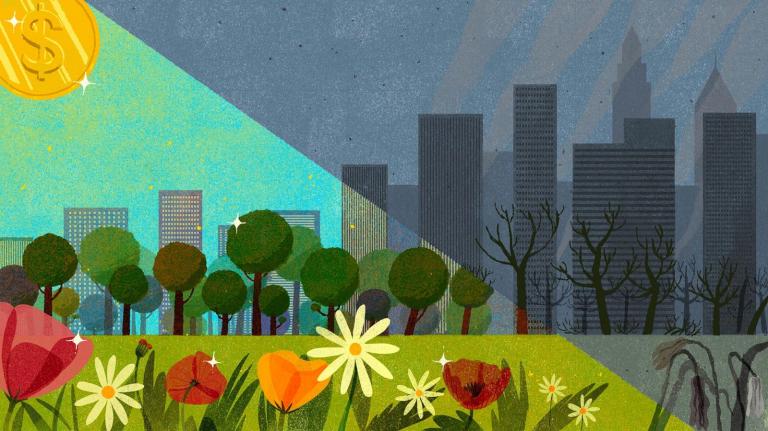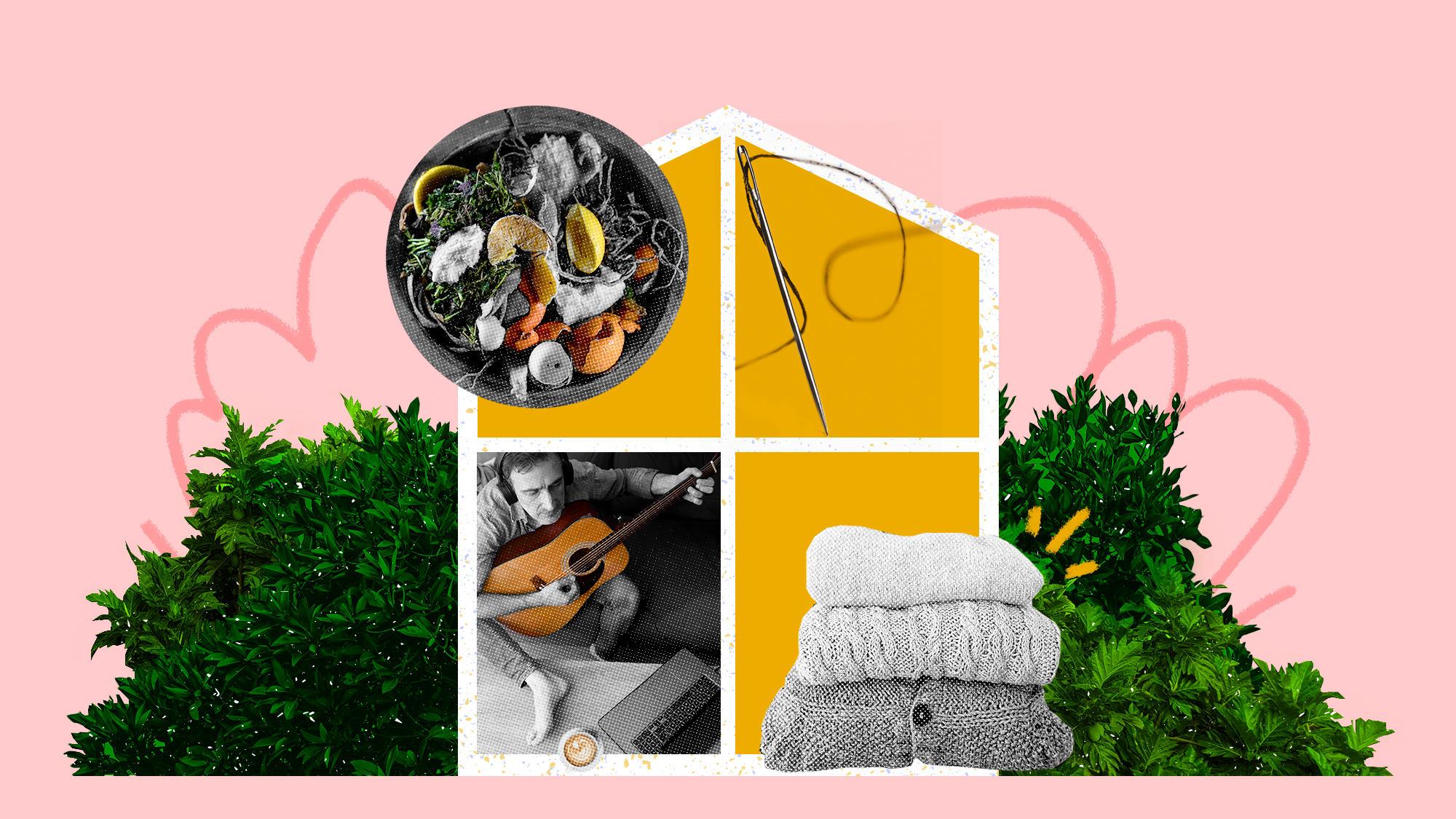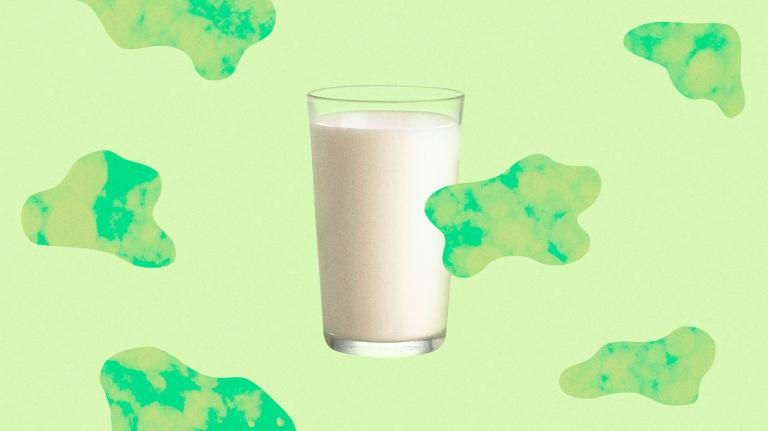Yes, many of us are hunkering down inside through the winter, celebrating the holidays without our loved ones and the traditions we hold dear. But there’s a silver lining. All this home-alone time gives us an opportunity to get creative with our gift-giving and ditch the frantic, last-minute mall spree to opt for a thoughtful gesture, a meaningful experience, or an act of service.
That won’t just win you points with the family — it’ll help reduce the manufacturing, shipping, and waste explosion that adds to pollution every December. By one estimate, holiday shopping and travel can contribute up to 1,400 pounds of carbon dioxide emissions per person. And shopping for “sustainable” products isn’t always the way to go. Greenwashing abounds, with many companies exaggerating the cleanliness of their practices. (Despite marketing itself as an ethical alternative to fast fashion, the clothing brand Everlane, for example, has come under fire for union-busting and failing to track water use, fabric waste, and greenhouse gas emissions in its supply chain.)
That’s why it’s best to leave your digital shopping cart empty this year. To help, we asked four Grist 50 Fixers for low-carbon, non-material ways to show your love this giving season without feeding into a vicious cycle of consumption.
For your foodie father
As chef and owner of catering company Birch Basket, Hillel Echo-Hawk knows that food brings people together — and that, when it comes to caring for the planet, what we eat matters. For the climate-concerned home cook in your life, there’s no better gift than a membership to a neighborhood food co-op or community supported agriculture program, so they can buy ingredients from regional purveyors. Some farmers markets also sell gift certificates. “The most sustainable thing you can do is shop local,” Echo-Hawk says. “Shop at farmers markets, butchers, fishmongers. Know your farmers.” Other ideas: a course on composting, and for apartment dwellers, a yearlong subscription to a pick-up service that donates scraps to urban farms.
For a socially-distanced bonding experience, choose a recipe and then pick up enough ingredients for two from an independent supplier. Divvy them up and drop off one portion at your favorite foodie’s house while keeping the rest for yourself. Then cook together over Zoom. Echo-Hawk suggests you cut down on food waste by making use of what’s already in your pantry rather than buying all new ingredients. And if you can, stick to seasonal crops. “I’m a huge fan of not being traditional for the holidays,” Echo-Hawk says. “Get creative and find a recipe that makes use of root vegetables, bitter lettuces, and other winter staples. Let’s be honest, nobody really likes green bean casserole.”
For your fashionista friend
Lilian Liu is sustainability strategist for Futerra, a consulting firm that helps fashion brands and other firms adopt circular practices. Liu says she rarely buys new clothes as gifts and instead loves shopping secondhand. Your local thrift store likely has a great selection thanks to quarantine closet clean outs, but if you’re hesitant to shop in-person, apps like Depop and Poshmark make it easy to browse lightly worn wares online. And if handmade is more your speed, “tie-dye got hugely popular during the summer, and it’s a great way to revive your old sheets or clothes,” Lui says. You can make a hippie-chic tee all by yourself or share the fun with people in your household. And did you know that you can dye fabrics naturally? Avocado pits, onion skins, and blueberries are just a few of the food scraps you can use to make vibrant colors at no cost — to you or the climate. Our good friend Martha Stewart has a how-to.
At the end of the day, “extending the life of your existing clothes is the best thing you can do for the planet,” Liu says. Gifting a coupon for a nearby tailor encourages your friend to mend torn favorites rather than replace them, while also supporting local business. You can also pay for a Skillshare course on sewing, get them a darning kit, or if you’re an expert with a needle, give them the gift of your knowledge by offering a free lesson over Zoom. “Mending things yourself is fun — and empowering,” says Liu.
For your artsy aunt
After months without concerts, the holiday season is a great opportunity to bring in the music. (Sure, you can splurge on a shiny new guitar — but this is a non-gift guide, after all.) “With clubs and bars still closed, performers have been hit really hard by COVID-19,” says playwright and musician Tanya Kalmanovitch, who has a better idea. “There are incredible musicians in your community, wherever you are, who are offering lessons over Zoom.” You can pay for those lessons, or even for songwriting coaching, for a friend. Artist Home offers a database of virtual teachers around the country, and Craigslist is sure to have local listings. Kalmanovitch also suggests you buy that special someone an album by their favorite local band on Bandcamp — a site Kalmanovitch says pays artists fairly and has been donating to musicians throughout the pandemic.
For the writers in your life, email newsletter subscriptions are gifts that keep on giving. Lit Hub has a list of literary newsletters, including Memoir Monday, a weekly collection of personal essays selected by editors at esteemed publications. Kalmanovitch’s favorite is The Sharpener, a daily anthology of poems, images, quotations, and professional opportunities for artists, curated by poet Sean Singer. And if you’re brave, penning a poem, heartfelt letter, or silly story yourself is sure to warm any writer’s heart.
For your nature-loving niece
The equivalent of a daily forest bath is key to staving off the winter doldrums — and luckily, artist and biologist Brandon Ballengée knows how to give the gift of green. “My family just made a little greenhouse out of recycled pipes and other abandoned materials to help keep our tomato plants alive,” he says. “Finding and putting together the pieces was like a really fun game.” Taking on a similar project and gifting the final product, along with a propagated plant or two, is a perfect DIY present. Or, if you live near your recipient, make the fun last by taking turns crafting it and swapping the item back and forth — and say hi from a safe distance while you’re at it.
“I’m also starting to save native seeds from the milkweed, pecan trees, and magnolia trees that I grow,” Ballengée says. “Last year, I made seed-bomb sculptures in the shapes of dogs and unicorns and turtles.” These video tutorials for easy heart and flower shapes made from silicon molds are a good place to start. By sharing seeds, you’re giving someone the pleasure of watching a plant grow from the ground up and teaching them about the species indigenous to your local ecosystem. And if you’re super savvy, offer to take your loved one on a guided nature walk or birding expedition. That time together, according to Ballengée, is a great way to end a year of loss and turmoil and show you care. “Give the gift of love and help each other focus on a brighter future,” he says.



